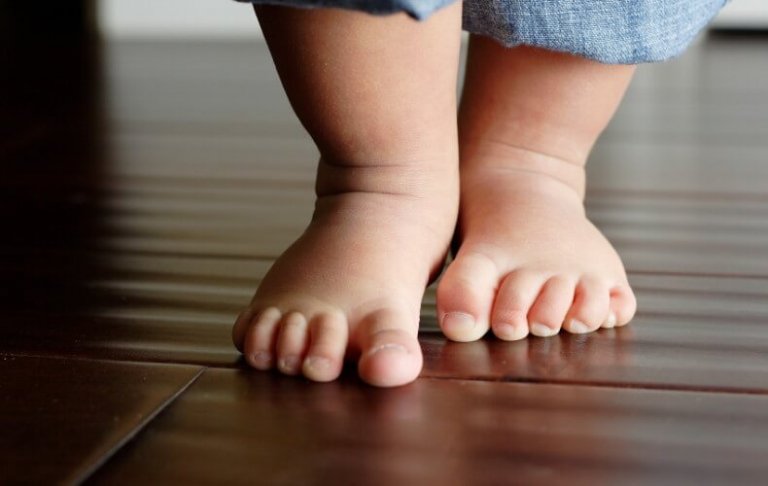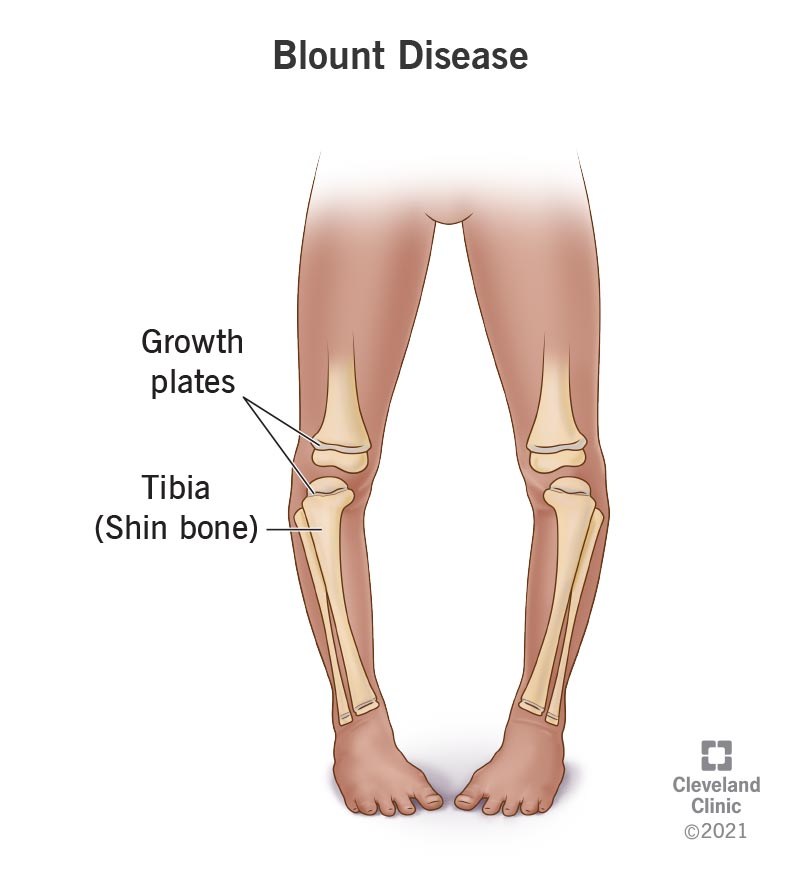bow legged baby walking
The result is a bow-shaped appearance in your babys. The bones will appear to.
A bow-legged baby might look that way for several months after they begin to walk.

. Its more common in babies of above-average weight. If you hold the childs feet together his ankles touch but the knees remain apart then it is bow Legged baby. Over time the legs will straighten and the baby will walk with a more erect posture.
In this article we shall help you understand the reason signs treatment fo. Also known as genu varum bowlegs are an outward curve of the upper half femurs and lower half tibias of the leg bones. However as your child begins to put more pressure on their legs through these activities it might increase the bowing.
When children first start walking its normal for them to walk with their feet apart and their arms stretched out to help them balance. Out of many other concerns parents have this fear when a child starts to walk. Most children aged 18 months to 2 years have some bow-leggedness.
Bowed legs may last from zero to 24 months after your baby starts walking. Encouraging standing and walking Start early. Bow legs are sometimes more noticeable when.
This is usually a result of the way they were packaged in the uterus. Why Does Baby Have Bowed Legs The cramped quarters of the womb can lead to a bow-legged baby. Babies are born bowlegged because of their position in the womb.
Its also common for young children to appear bow-legged. This creates a wider space than normal between the knees and lower legs. Bow Legged baby is very much noticeable when the baby is standing.
In a word no. Bowlegs is considered a normal part of growth in babies and toddlers. Babies are born with bowlegs because of their.
Initially your baby might have bowed legs but gradually they will get a normal appearance. You may notice bowleggedness more as your child starts to stand and walk but typically the legs gradually. He loves when we hold him by his hands and help him stand on our laps and he practices taking a few steps up to our.
In young children bowlegs is not painful or uncomfortable and does not interfere with a childs ability to walk run or play. Bow legs genu varum is a condition where one or both of your childs legs curve outward at the knees. These days all my DS wants to do is walk all-over us.
Bowed legs usually straighten once babies with. When held upright most babies will start to support themselves on their legs from around four to five months. Kiran Chauhan 41 subscribers My baby who started walking by 11 month old have bow legsbut its totally normal for babies to have bow legs at this agewhich they will naturally.
When your child starts walking somewhere between 9 and 17 months the bones in her legs will start to slowly reform as old bone breaks down and is replaced by new bone in different places. Standing or walking doesnt cause bowed legs. Pediatric Bowlegs Bowlegs are a condition in which the legs curve outward at an extreme angle at the knees while the childs feet are together.
Many babies are born bowlegged because their legs were folded tightly across their bellies in-utero during pregnancy inside the mother.

How To Massage Your Baby Strengthening Photos Babycentre Uk

40 Permanent Remedy For Bow Legs Ideas Bow Legged Bow Legged Correction Knock Knees
/father-encouraging-baby-daughter-to-take-first-steps-at-home-992101776-fe9e94ae72b940e0b208b679aa9f8b43.jpg)
When Do Babies Usually Start To Stand
Bowed Legs In Children Is It Normal Dr Radhakrishna

Shea S Bowed Legs For Record Keeping Youtube

Bowed Legs Signs Of Bowed Legs When To Visit The Doctor With Video

Bowed Legs In 6 Month Old Baby Babycentre

17 Month Old And Bow Legged Babycenter

Bowed Legs Signs Of Bowed Legs When To Visit The Doctor With Video

Bow Legs In Children A Comprehensive Guide For Parents

How To Correct Bow Legs In Children You Are Mom

Bowlegs Or Knocked Knees In Your Child When Should You Be Concerned

Uzivatel Cure International Na Twitteru Transformationtuesday Sarah Had Surgery For Blount S Disease A Growth Disorder That Causes Bowed Legs In Children Today Sarah Is Back In Her Village Walking Free From Casts

Your Toddler Is Walking On Their Toes Should You Be Worried Move And Play Paediatric Therapy



